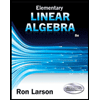A plane is flying with an airspeed of 200 mph in the direction of N 50°E and a 40 mi/hr wind is blowing directly from the west. Approximate the true course(direction) and ground speed of the airplane using vectors.
A plane is flying with an airspeed of 200 mph in the direction of N 50°E and a 40 mi/hr wind is blowing directly from the west. Approximate the true course(direction) and ground speed of the airplane using vectors.
Trigonometry (MindTap Course List)
10th Edition
ISBN:9781337278461
Author:Ron Larson
Publisher:Ron Larson
Chapter3: Additional Topics In Trigonometry
Section: Chapter Questions
Problem 33CT
Related questions
Question

Transcribed Image Text:A plane is flying with an airspeed of 200 mph in the direction of N 50°E and a 40 mi/hr wind is blowing directly
from the west. Approximate the true course(direction) and ground speed of the airplane using vectors.
Expert Solution
This question has been solved!
Explore an expertly crafted, step-by-step solution for a thorough understanding of key concepts.
This is a popular solution!
Trending now
This is a popular solution!
Step by step
Solved in 5 steps with 5 images

Knowledge Booster
Learn more about
Need a deep-dive on the concept behind this application? Look no further. Learn more about this topic, calculus and related others by exploring similar questions and additional content below.Recommended textbooks for you

Trigonometry (MindTap Course List)
Trigonometry
ISBN:
9781337278461
Author:
Ron Larson
Publisher:
Cengage Learning

Algebra & Trigonometry with Analytic Geometry
Algebra
ISBN:
9781133382119
Author:
Swokowski
Publisher:
Cengage

Elementary Linear Algebra (MindTap Course List)
Algebra
ISBN:
9781305658004
Author:
Ron Larson
Publisher:
Cengage Learning

Trigonometry (MindTap Course List)
Trigonometry
ISBN:
9781337278461
Author:
Ron Larson
Publisher:
Cengage Learning

Algebra & Trigonometry with Analytic Geometry
Algebra
ISBN:
9781133382119
Author:
Swokowski
Publisher:
Cengage

Elementary Linear Algebra (MindTap Course List)
Algebra
ISBN:
9781305658004
Author:
Ron Larson
Publisher:
Cengage Learning